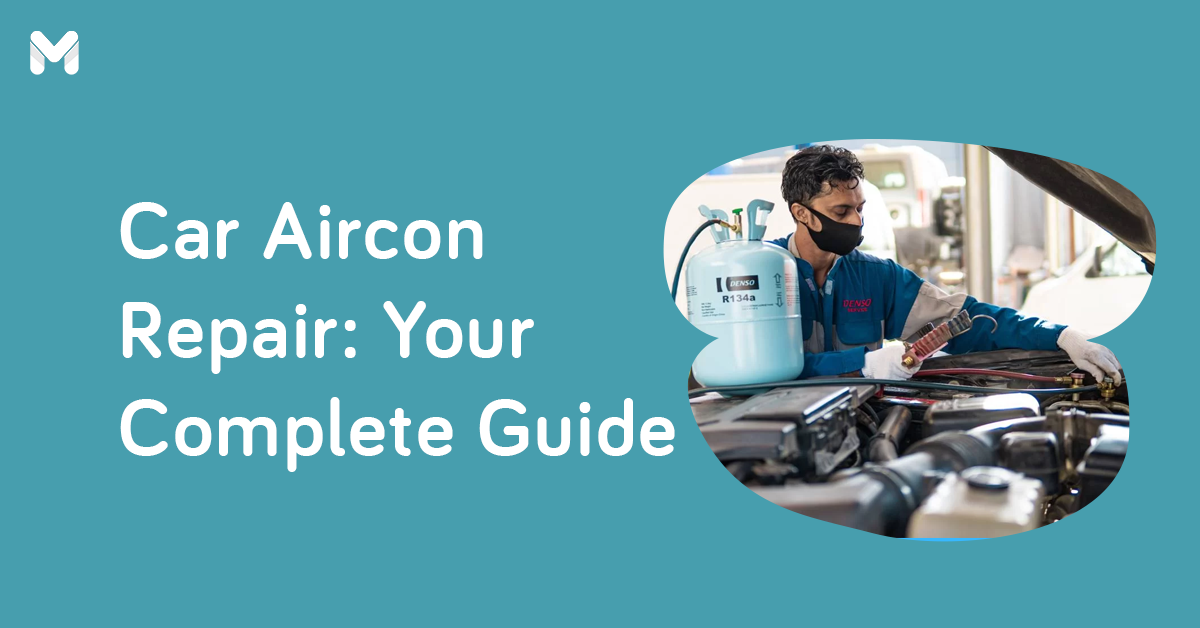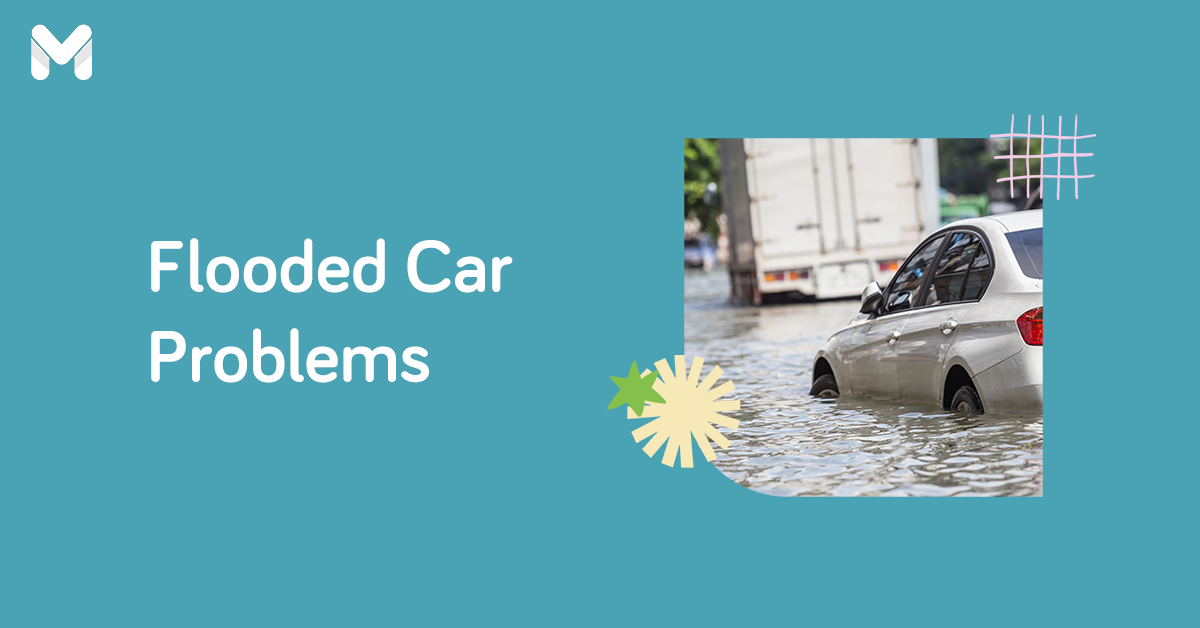Roughly 20 typhoons visit the Philippines every year. How prepared are you for the typhoon season?
Fortunately, weather bureaus track the formation of low-pressure areas (LPAs) and the movements of typhoons. Their updates should help you prepare for the rainy days.
Aside from protecting lives and your home, taking care of your car is crucial. After all, it's your means of mobility and maybe even your source of livelihood. Plus, car repairs are expensive—it’s better to be proactive rather than reactive.
Here are things you should remember to protect your car from the rain, especially during a typhoon in the Philippines.
15 Ways to Protect Your Car from the Rain
☔ Park in Your Garage
If you have a covered garage, park your car inside—it's as simple as that. Shelter your vehicle from the rain to keep the water from seeping in between your auto’s bodywork, engines, and other parts. If the water reaches parts where it takes longer to evaporate, they may corrode.
☔ Pick a Safer Parking Spot

If you live in a flood-prone area, park your car on higher ground, such as parking venues for malls and offices. It’s better to pay a parking fee than purchase a new car.
You can also consider parking at your relative’s or friend’s place. Just make sure to avoid parking under large trees and electrical posts. Strong winds can blow them down and cause them to hit your car.
☔ Invest in a High-Quality Car Cover
Do car covers protect a vehicle from the rain? Yes, they do—plain and simple.
If your garage doesn’t have a roof, protect your car from the rain with a waterproof cover. See to it that the rain cover for your car is thick, durable, and specifically designed for your auto model.
Moreover, it should be snug, but not too tight. That way, it won't be blown away by strong gusts on rainy days.
As much as possible, avoid thick tarpaulin covers. This type of material may leave small scratches on your car’s surface when it gets ruffled by the wind.
☔ Get Comprehensive Car Insurance Coverage
Get a car insurance policy that covers more than just loss and damage. Make sure to include an Acts of God/Acts of Nature add-on—particularly with coverage for typhoons and flooding—in your comprehensive car insurance plan.
Compare your options below:
| Car Insurance Company | Maximum Total Sum Insured | CTPL Coverage | Own Damage & Theft Coverage | Acts of Nature Coverage | Death / Disablement Coverage |
|
FPG Insurance
|
₱4 million
|
✔️
|
✔️
|
✔️
|
|
|
Malayan Insurance
|
₱7.5 million
|
✔️
|
✔️
|
✔️
|
|
|
The Mercantile Insurance Corporation
|
₱5 million
|
✔️
|
✔️
|
||
|
OONA Insurance (formerly MAPFRE)
 |
₱5 million
|
✔️
|
✔️
|
✔️
|
✔️
|
|
PGA Insurance
 |
₱3 million
|
✔️
|
|||
|
SGI Philippines
|
₱5 million
|
✔️
|
✔️
|
✔️
|
|
|
Standard Insurance
|
₱5 million
|
✔️
|
✔️
|
✔️
|
✔️
|
|
Stronghold Insurance
|
₱3 million
|
✔️
|
☔ Keep Electrical Parts Dry
-Jun-07-2024-05-29-22-7872-AM.png?width=600&height=400&name=Pics%20for%20blog%20-%20600x400%20(1)-Jun-07-2024-05-29-22-7872-AM.png)
Protect your car from the effects of getting soaked in the rain. If you’re stuck in the flood (or if your car is parked but floodwater starts to rise), disconnect the battery terminals to prevent an electronic shortage.
Keep the integrated circuitry and modules under the carpet and alongside the front interior. See to it that the engine bay is kept dry as well.
☔ Protect Your Car’s Exterior Paint
Although your auto’s exteriors are designed to withstand water, that doesn’t mean you can leave your car in the rain. If you want to protect your car from the effects of rainwater, don’t simply wash it after the downpour.
Wax your car to keep the integrity and quality of its paint job. This also protects your car from unwarranted scratches.
☔ Check All Rubber Seals
Check the rubber seals around the trunk, hood, windows, and doors for water leaks. If you see puddles on the floor mats and smell something weird in your car, chances are it's a leak.
While you're at it, remove any debris around the seals. If the seals are worn out or loose, they won't be able to prevent water from entering your car and causing corrosion. Fix water leaks in your car before they cause further damage.
☔ Get Your Car Some Mudguards
The motion of your car’s wheels is enough to send mud, dirt, pebbles, and debris flying onto your car’s body and other sensitive parts. To keep that from happening, install some high-quality mudguards, which are available at your local car shop and even online.
Read more: Upgrading Your Ride? Visit These Car Accessories Shops
☔ Replace and Clean the Windshield Wipers
-Jun-07-2024-05-33-20-4376-AM.png?width=600&height=400&name=Pics%20for%20blog%20-%20600x400%20(2)-Jun-07-2024-05-33-20-4376-AM.png)
Change your wipers at least once a year. Once they become cracked, brittle, or dry, wipers can leave streaks on the windshield as they move, reducing the visibility of the road ahead while driving in the rain.
When the nozzles of your windshield waters get clogged with water, they won't be able to perform their function properly. Clean the washers using a fine needle or old toothbrush with warm water.
☔ Apply Windshield Repellent
Some car owners usually ignore water repellents, believing their cars can easily weather the rain. However, such a seemingly trivial product will not only protect your windshield from damage but also promote driving safety.
A windshield repellent helps keep water off your windshield, giving you a much clearer view while driving. Here’s how to use it:
- Apply windshield repellent before driving. Make sure to follow the instructions of the manufacturer. Apply the repellent in circular motions for even coating.
- Let the repellent sit for a few hours.
- Rinse the windshield and wipe the surface with a microfiber towel.
☔ Protect Your Car’s Interiors
Unfortunately, even with preventive measures, sometimes rainwater will still get inside your car. To protect your car from moisture caused by the rain, avoid using rubber floor mats, as they will just create a pool of water.
Instead, place fabric mats to absorb the water. Don’t forget to bring extra ones, especially if you’re anticipating heavy rains.
In case the seats get wet, keep the window open once your car is already parked in the garage. This will prevent mildew growth in your car.
Otherwise, your car will end up becoming smelly and stuffy. If the bad odor sticks, get rid of it by opening a bottle of essential oils or using the prescribed car freshener.
☔ Wash Your Car Before and After the Rain
Don't forget to have your car waxed before the rain. Waxing will help repel the rainwater off your vehicle's body and prevent it from causing exterior damage.
Don't depend on rainwater to do the cleaning—it collects pollutants and contaminants from the air and transfers them to your car. When rainwater dries up, it leaves hard-to-remove marks on the windows, windshield, and headlights. Rainwater can also reach the metal parts and cause rusting.
Mud and grime can also accumulate on your wheels and tires if you fail to take your car to the car wash after driving in the rain. Also, washing your car gets rid of dirt and debris that can damage its paint.
☔ Inspect Your Car
-Jun-07-2024-05-38-08-8307-AM.png?width=600&height=400&name=Pics%20for%20blog%20-%20600x400%20(3)-Jun-07-2024-05-38-08-8307-AM.png)
As soon as the typhoon is over, check your vehicle's condition and assess whether it's safe to drive. Look for any signs of damage.
If you suspect it's flooded, don't attempt to start your car, as it will cause more problems. Move quickly to remove water from your car’s interiors. This will reduce the chances of rainwater getting into the car's internal parts. Use a wet vacuum cleaner to hasten the process.
Once done, get an accredited mechanic to check your car. Check with your car insurance provider if the repairs will be covered.
Read more:
- What to Do If Your Car Gets Flooded: Check for These Common Problems
- Effective Car Cleaning Tips for Dirt, Viruses, Ash on Car Paint, and More
- What’s Wrong with Your Car? 10 Car Problems to Look Out For
☔ Drive Only When It’s Necessary
If you can, avoid exposing your car to the rain at all. Go for a drive only when it’s necessary.
Otherwise, wait it out or walk to your destination if possible. Soon enough, you’ll realize that your patience will be worth it.
☔ Drive Safely
If you really need to drive your car in the rain, take note of these tips not just for safety but also for the longevity of your car:
- Avoid flood-prone roads. If your car gets flooded, expect a series of unfortunate events: engine stalling, electrical troubles, faulty brakes, and more.
- Remain calm and don't make sudden motions. Keep in mind that the road is slippery. Any unnecessary movements can endanger you and your passengers.
- Avoid any distractions while driving. From your mirrors, keep a 360-degree vision of everything around you. It might be difficult to track movements in the rain, so if you have a shotgun passenger, ask them to become your second pair of eyes.
- Keep a safe distance from the car in front of you.
- Do not follow trucks and buses. Water splashing from their large tires will impair your vision. If you must pass, do so quickly and safely. However, don’t attempt to overtake them, especially if the road is narrow and slippery and your field of vision is limited.
- Stay updated on the latest information on the weather so you can plan your trips and protect your car accordingly. Check the PAGASA website[1] or Facebook page[2] for weather updates. Follow precautionary instructions from your local authorities. If you don’t have electricity, keep a battery-operated radio to remain informed on weather updates.
Final Thoughts
The rain can cause serious damage if you don't prepare for typhoon season. While you can't prevent a typhoon in a disaster-prone country like the Philippines, you can prevent your car from becoming a huge, useless piece of junk. Protect your car from the rain and make it last longer with the tips above.
🛡️ Find the Right Car Insurance Policy for You
If you plan to get a car insurance policy, visit the Moneymax website. Get a quote for free by clicking the banner below!
Sources:










